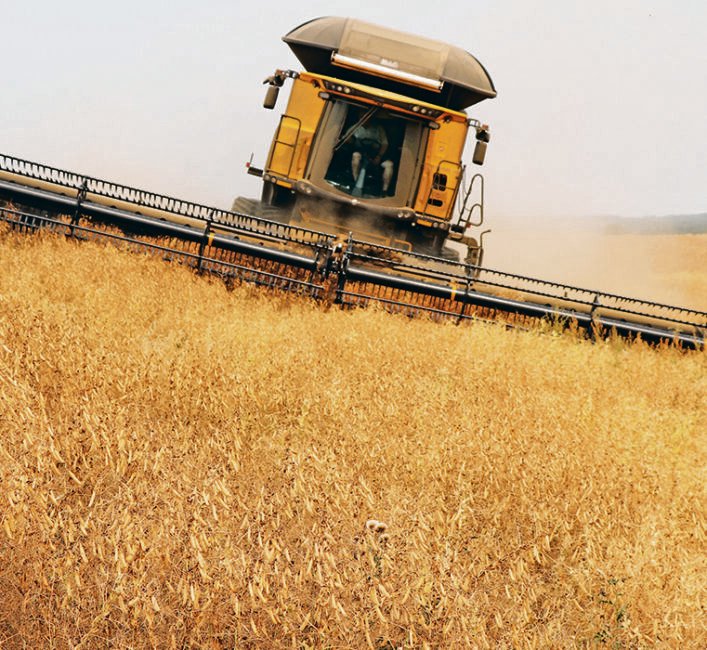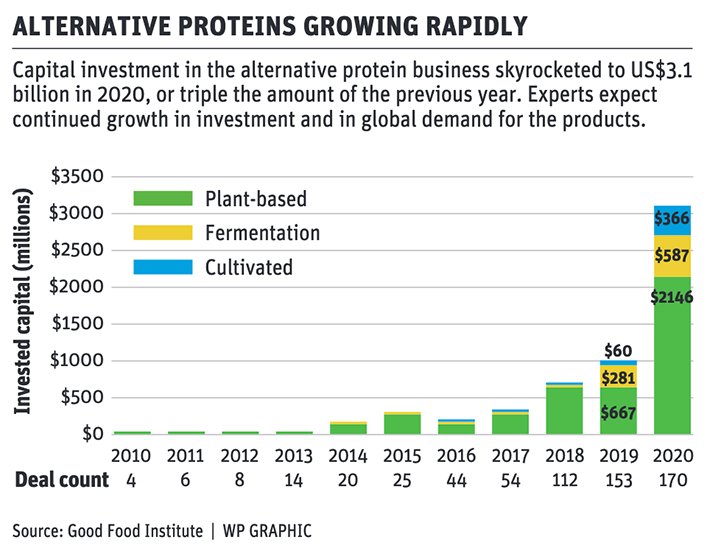What’s in a name? Success for pulses

Pulse Canada is attempting to knock down regulatory barriers that prevent the industry from realizing the full potential of the exploding demand for alternative proteins.
Association president Greg Cherewyk told delegates attending the Global Pulse Confederation’s Ask the Experts North America webinar that 27 percent of all meat substitutes in the global packaged food market comprise pulses.
Pea protein use expanded at a 26 percent compound annual growth rate between 2015 and 2020.
“There’s no doubt we’re experiencing a period of unparalleled growth potential for our industry,” he said.
“Pulses are on trend and on the shelf.”
New food product launches containing pulses are up 500 percent over the past decade.
There was US$3.1 billion of capital invested in the alternative protein sector in 2020, including $2.15 billion in plant-based proteins, according to the Global Food Institute.
Cherewyk said the top priority for Pulse Canada is to develop a comprehensive strategy to “own the alternative protein space” and to be central to the United Nations’ push to transform food systems.
The association has been talking to processors and food manufacturers working with plant-based alternatives who have told Pulse Canada that growth in the sector has been constrained by outdated government regulations.
Protein claims require animal testing and the use of the Protein Efficiency Ratio method. Cherewyk said those are “major hindrances” to Canada’s plant-based protein sector.
That is why Pulse Canada launched a $1 million project in June in co-operation with Protein Industries Canada to fund a collection of studies to overcome those barriers and to create a regulatory centre of excellence to help industry modernize current regulations.
It is also helping to create the International Pulse Ingredient Consortium to standardize the nomenclature for pulse ingredients, which lack consistency compared to competing ingredients like soy proteins and wheat flours.
Pulse Canada is also keeping an eye on future growth opportunities.
The plant-based meat market was valued at $4.3 billion in 2020 and is expected to reach $8.5 billion by 2025, according to a Business Wire article.
Protein Industries Canada believes the value will soar to $85 billion by 2036 and potentially as much as $143 billion.

Soy and pea protein are expected to make up half of the ingredient market by that time, which would amount to 66 million tonnes of annual demand.
But Cherewyk said there will be fierce competition from products like algae jerky, fungi bacon and cultured meat burgers.
“It is not a given that pulses alone will own the alternative protein space,” he said.
The recently held UN Food Systems Summit is setting a course to radically change the way food is produced, processed and consumed.
He believes pulses could be a big part of the solution because they are healthy, safe and sustainable.
“It is incumbent upon our industry to build the body of evidence that supports these statements,” said Cherewyk.
Pulse Canada has already done some legwork on that front. It has compelling evidence showing that reformulating three wheat-based food products with pea flour improved the nutrient balance score of the products and reduced greenhouse gas emissions by 48 percent.
Another study shows that substituting one-third of a lean beef patty with cooked lentils resulted in 12 percent fewer calories, 32 percent less saturated fat, 26 percent lower production costs and a 33 percent reduction in the burger’s carbon, water and land-use footprint.
Tim McGreevy, chief executive officer of the American Pulse Association, said three-quarters of Gen Z and millennials in the U.S. consider climate impact when making food choices.
“The new counting carbs is counting emissions and consumers are demanding we slim down,” he said in a YouTube video promoting the sustainability benefits of eating pulses.
He said the pulse industry is facing stiff competition on that front from cultivated meats, insect protein, fungi protein and seaweed protein.
“Pulse crops offer a solution to reducing greenhouse gas emissions right now — not in the future, not after years of research but right now,” said McGreevy.
He said pulses are the best land-based, climate friendly food and encouraged the entire industry to share the USA Pulse Crop Sustainability video with their friends and social networks.
Source: producer.com

